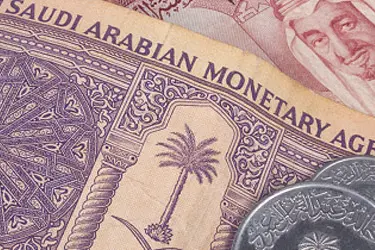PHOTO
21 December 2016
JEDDAH: Saudi Arabia’s private sector is expected to witness abundant investment opportunities as the Kingdom pursues its Vision 2030 and National Transformation Plan (NTP) 2020 to diversify its economy, say analysts.
In a report, economists at Al-Rajhi Capital said opportunities are spread across many sectors, ranging from strategic divestments/privatizations by the government, to infrastructure, affordable housing, transport, capital markets and a host of other sectors.
Analysts say they expect health care, education, mining, tourism and industrial sectors to see significant early private investments.
Al-Rajhi Capital’s preferred stocks are Maaden, Hammadi, Yansab, Saudi Basic Industries Corp. (SABIC) and Almarai — all of which have been assigned a “neutral” rating.
While the recent rally in Saudi stocks leaves limited scope for a sharp upside in the short-term, analysts at the brokerage said their preferred picks are likely to see long-term outperformance.
As implementation of economic reforms gathers pace in the Kingdom, the government’s key role is likely to shift from a key capital contributor to a regulator/facilitator/partner, they said.
Planned capital market reforms in 2017 — such as changing the equities settlement cycle to T+2, introducing derivatives and creating a secondary market — are also likely to improve Saudi Arabia’s chances of an early inclusion in the MSCI emerging market index.
Although consumer spending concerns remain, the Tadawul is better positioned than the local economy to weather a potential slowdown.
This is due to the concentration of more stable sectors such as banking and petrochemicals, as opposed to the likes of retail and real estate, which will be more severely affected by a consumer spending slowdown.
Key macro upside triggers in 2017 are likely to be from further easing of liquidity, inflow of foreign capital helping build up foreign exchange reserves, rising local employment levels which will drive consumption, and higher oil prices.
Meanwhile, downside risks for the market are a substantial drop in crude prices, lack of sufficient private participation, a faster-than-expected decline in the Saudi Arabian Monetary Authority’s (SAMA) foreign exchange reserves, liquidity concerns and a major global economic downturn or geopolitical events.
Cost of Living Index falls
The general index of the cost of living in the Kingdom fell in November by 0.2 percent compared to October 2016, data compiled by the General Authority for Statistics (GaStat) showed.
The general index of the cost of living in the Kingdom amounted to (137.5 points) in November 2016 compared to (137.8 points) in October last year, recording a decrease of (0.2 percent), referring this decline of the index to the fall of six key areas: Food and beverage (0.6 percent), clothing and footwear by 0.6 percent, furnishing, home equipment and maintenance by 0.5 percent, recreation and culture by 0.4 percent, health by 0.2 percent and communications section by 0.2 percent.
Prices of 60 food products in Saudi Arabia registered a year-on-year (YoY) fall in November, while prices of 20 other commodities rose. Prices of feedstock and animals also declined during October. Similarly, prices of construction materials slid last month. Price of sand and gravel mixture saw a decline of 18 percent.
JEDDAH: Saudi Arabia’s private sector is expected to witness abundant investment opportunities as the Kingdom pursues its Vision 2030 and National Transformation Plan (NTP) 2020 to diversify its economy, say analysts.
In a report, economists at Al-Rajhi Capital said opportunities are spread across many sectors, ranging from strategic divestments/privatizations by the government, to infrastructure, affordable housing, transport, capital markets and a host of other sectors.
Analysts say they expect health care, education, mining, tourism and industrial sectors to see significant early private investments.
Al-Rajhi Capital’s preferred stocks are Maaden, Hammadi, Yansab, Saudi Basic Industries Corp. (SABIC) and Almarai — all of which have been assigned a “neutral” rating.
While the recent rally in Saudi stocks leaves limited scope for a sharp upside in the short-term, analysts at the brokerage said their preferred picks are likely to see long-term outperformance.
As implementation of economic reforms gathers pace in the Kingdom, the government’s key role is likely to shift from a key capital contributor to a regulator/facilitator/partner, they said.
Planned capital market reforms in 2017 — such as changing the equities settlement cycle to T+2, introducing derivatives and creating a secondary market — are also likely to improve Saudi Arabia’s chances of an early inclusion in the MSCI emerging market index.
Although consumer spending concerns remain, the Tadawul is better positioned than the local economy to weather a potential slowdown.
This is due to the concentration of more stable sectors such as banking and petrochemicals, as opposed to the likes of retail and real estate, which will be more severely affected by a consumer spending slowdown.
Key macro upside triggers in 2017 are likely to be from further easing of liquidity, inflow of foreign capital helping build up foreign exchange reserves, rising local employment levels which will drive consumption, and higher oil prices.
Meanwhile, downside risks for the market are a substantial drop in crude prices, lack of sufficient private participation, a faster-than-expected decline in the Saudi Arabian Monetary Authority’s (SAMA) foreign exchange reserves, liquidity concerns and a major global economic downturn or geopolitical events.
Cost of Living Index falls
The general index of the cost of living in the Kingdom fell in November by 0.2 percent compared to October 2016, data compiled by the General Authority for Statistics (GaStat) showed.
The general index of the cost of living in the Kingdom amounted to (137.5 points) in November 2016 compared to (137.8 points) in October last year, recording a decrease of (0.2 percent), referring this decline of the index to the fall of six key areas: Food and beverage (0.6 percent), clothing and footwear by 0.6 percent, furnishing, home equipment and maintenance by 0.5 percent, recreation and culture by 0.4 percent, health by 0.2 percent and communications section by 0.2 percent.
Prices of 60 food products in Saudi Arabia registered a year-on-year (YoY) fall in November, while prices of 20 other commodities rose. Prices of feedstock and animals also declined during October. Similarly, prices of construction materials slid last month. Price of sand and gravel mixture saw a decline of 18 percent.
© Arab News 2016












